Mr. Morita Hirosmitsu was one of the victims of the atomic bombing of Nagasaki. His house was 1.8 km from the center of the bomb. While he was on his way home with his brother, he heard the sound of airplane engines behind him and parachutes falling overhead. Three older students came up and informed him that these were pumpkins sent to his house under the wartime rationing system. As he followed the parachutes and walked into his house, he was suddenly surrounded by a strong wind and an orange light, like an electric spark. He was blown about 5, 6 meters away and lost consciousness. He confided that if he had taken just one more step, his life would have ended.
After gradually regaining consciousness and stepping out of the house, everything around him was burned down. Mr. Morita had to witness the fate of the people standing right next to him. His brother was burned to half his body. Of the three older students, one was burned, hit all over his body and died on the spot; another was burned to half his body. The urn of another brother who died on July 31, 1945 was also gone. He and his family had to flee to the mountains.
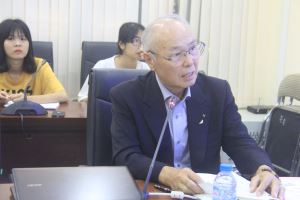
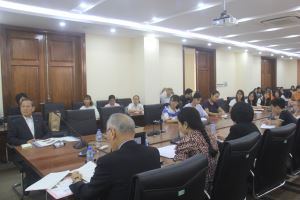
On the way, he witnessed horrific, hellish scenes at Gosha Park, where the cries of burned and thirsty people echoed. When his family reached the top of the mountain and returned to the park at dusk, these people had died. Although they were taken to the infirmary, those who were too badly burned could not survive. In the evening, standing from Gosha Temple, looking down, the streets of Nagasaki were ablaze in a sea of red fire. In 1979, a memorial was erected at Gosha Park. Similar scenes also appeared in front of Nagasaki Station, where trucks and tricycles were constantly operating to carry away the stinking corpses. Sanitation workers had to use sticks and gasoline to handle and destroy the corpses. According to estimates, about 20,000 bodies were burned in front of Nagasaki Station. Mr. Morita was only 10 years old at that time. Those scenes still haunt him to this day.
In addition to those killed in the explosion, radiation also left short-term and long-term effects. Mr. Morita shared that a 28-year-old man named T (real name withheld), standing 1 km from the center of the explosion, had a piece of radioactive glass stuck in his back. After a week, Mr. T's hair fell out, and small purple spots appeared on his body; on September 13, he passed away. Another person named Y worked at a weapons factory 1.8 km from the center of the explosion. He did not suffer direct consequences from the explosion, but due to exposure to radioactive water, he also passed away on August 29, with similar symptoms. Mr. Morita himself and his relatives often suffer from diseases such as joint pain, dizziness and physical exhaustion. As one of the rare survivors, he expressed gratitude for life and fierce criticism of nuclear weapons. He hopes that with the people's determination, the Japanese government will soon sign the Treaty on the Prohibition of Nuclear Weapons, which other countries ratified on July 7, 2017 in New York, USA.
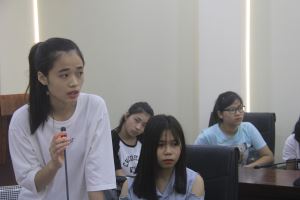
A student of the Faculty of Oriental Studies asked Mr. Morita a question.
After the presentation, on behalf of the University of Social Sciences and Humanities, Associate Professor Dr. Hoang Anh Tuan (Vice Rector) expressed his thanks to Mr. Morita and the National Peace Memorial Museum for the Nagasaki Atomic Bomb Victims. The Vice Rector hoped that this event would help students understand more about the cruelty of war, so that they could join hands to build and maintain peace in the world. Mr. Morita also received shares and comments from the University's students about the sympathy of the people of Vietnam and Japan when both had to go through a cruel war; activities to raise awareness about the harmful effects of nuclear weapons; the connection between nuclear victims in Japan and Agent Orange victims in Vietnam.
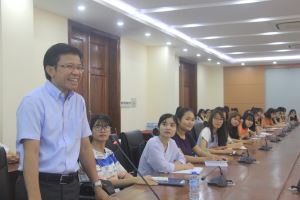
Associate Professor Dr. Hoang Anh Tuan sent his thanks to Mr. Morita and the Japanese partners.
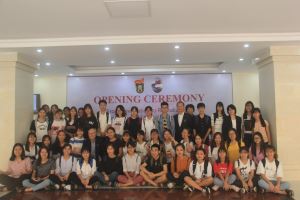
Students of the University of Social Sciences and Humanities took a souvenir photo with Mr. Morita Hirosmitsu
| The Peace Memorial Museum for the Atomic Bomb Victims was established under the Government's law on medical care for atomic bomb survivors in Nagasaki and Hiroshima to help people understand the sacrifices of atomic bomb victims and pray for eternal peace. These memorials were built to help people better understand the atomic disaster, preserve and convey the events that happened to future generations, and remember the victims who died. The exhibition at the University of Social Sciences and Humanities, VNU, is the 12th exhibition co-organized by the Museum abroad and the second in an Asian country. |
Author:Tran Minh
Newer news
Older news